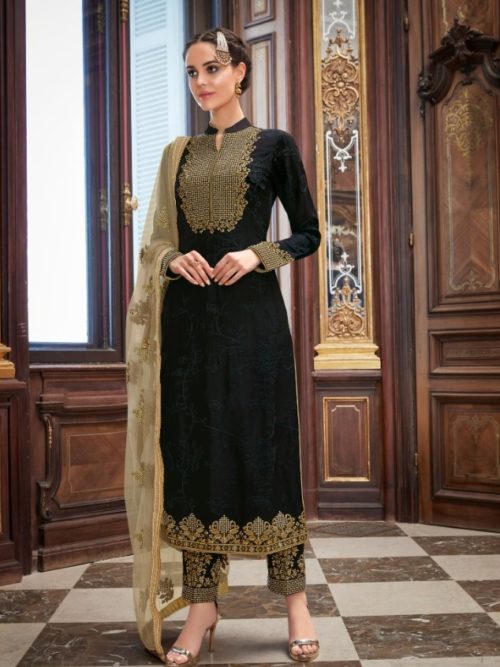Zari Work
Zari or Zari Work as it is known is a many-sided craft of weaving strings made of fine gold or silver. These strings are additionally woven into textures, basically made of silk to make unpredictable examples. The plans are wonderful to such an extent that separated from the money related worth connected to these strings, the texture likewise gets a general rich and a lovely look.
The craft of Zari has been related to the Aristocratic and Royal Persona in India for quite a while. It is one of the most celebrated and expands methods in metal weaving. For a long, Zari has been workmanship related to the highborn and imperial persona in India. In Persian, the craftsmanship is known by the term – Zardozi.

Origin & History
It is accepted that the word Zari began in a town by a similar name in antiquated Persia (Iran of today) where craftsmen utilized the ability to weave dainty strings of gold and silver onto fine textures of silk. The craftsmanship was brought to India by Persian transients between 1700-1100 BC – the time of Rig Veda. In any case, zari work prospered during the Mughal period under the support of Emperor Akbar.
Scenario Nowadays
Because of a decrease in illustrious support, Zari which was at one time the gem in the crown of Indian texture make has now gotten limited to certain pockets in the nation.
It is sold principally in urban areas like Lucknow and Chennai, where silk textures as zari work sarees and Lucknowi suits are very mainstream. These days, Zari isn’t made of genuine silver and gold, however has polyester or cotton yarn at its center, enveloped by silver/brilliant metallic yarn. It has now been perceived by the Government of India as one of the most antiquated types of craftsmanship.
It is delivered in 20 hues and is accessible in an assortment like Zari on wood, glass, and so forth. There is an enormous market for Zari strings and other metallic articles. The main Indian markets for Zari items are Kolkata in the east, Mumbai, and Nagpur in the west; Jaipur, Amritsar, Delhi, and Varanasi in north and Mysore, Bangalore, Salem, Chennai, Madurai, Kanchipuram, and Kumbakonam in the south.
The utilization of Zari is the most in South India. Surat these days is the world’s biggest maker of a wide range of Zari like strings, cantile, strips, fringes, and so forth. Additionally, for happy events, for example, Durga Puja, Zari is known to decorate the clothing of goddess Durga.
Inspiration
Style is the thing that lies in the complex examples of Zari work. In the event that we follow the real motivation behind this strategy, it would lead us back to the Medieval occasions where Zari was utilized on silk texture. The examples were roused by old convictions and customs however they fluctuate here and there and are ignored as the centuries progressed.
Making
Zari is delivered by bending a smoothed metallic strip produced using unadulterated gold, silver or a metallic polyester film around a yarn made of silk, cotton, polyester etc. These zari strings are handled to build the brilliance of gold plating, giving it a stylish look.
Variety
Zari, which once appreciated a ton of regal support, has slid down because of significant expenses of valuable metals, for example, gold and silver. With regards to the occasions and in an offer to speak to different salary gatherings, Zari has experienced a few changes and augmentations.
Zari is sorted into 3 kinds:
1. Genuine Zari: It is made of unadulterated gold and silver. Because of the significant expense of unadulterated gold and silver, Real Zari is looked after by the exceptionally rich and perceiving.
2. Impersonation Zari: It is made of silver electroplated (meagerly) copper wire. Impersonation Zari was utilized as a swap for silver. Anyway, with expanding costs of copper as well, even Imitation Zari is created in a fairly restricted manner.
3. Metallic Zari: It is made of slitted polyester metalized film. Metallic Zari is the work that is in vogue as it weighs softly contrasted with unadulterated gold and silver or so far as that is concerned, copper. It is likewise reasonable and increasingly solid contrasted with Real Zari and Imitation Zari.
Garments with Zari are commonly specially made if there should arise an occurrence of Real Zari or Imitation Zari, though Metallic Zari can be paid off the rack.
The value range shifts anyplace between Rs. 20000/ – to Rs. 150000/ – relying upon the work required no doubt and Imitation Zari. For Metallic Zari, the value range is between Rs. 1500/ – to Rs. 12000/ – .
Styles
Sarees, kurtas, and salwars with zari are basically worn during unique events, for example, weddings, and celebrations. Textures with Zari loan a lofty look to the individual wearing it.
Zari work lehengas are the embodiment of wedding trousseau. They are known for the refined work, stunning examples, and outstanding effortlessness.
Maintenance
Zari contains the weaves of gold and silver. The metal, uniquely the silver weaves responds to the barometrical air and looks dull and old. To keep up its sparkle, the best thing is to enclose them with delicate cotton or a muslin dhoti. This keeps them from any response.
Cleaning is the best for Zari weaved dresses. On the off chance that there is a need to wash these dresses, it ought to be done in mellow cleanser water, at that point dry these in conceal. It is additionally prudent to abstain from splashing scents or antiperspirants straightforwardly on these dresses.
Popularity
Zari work garments have been picking up ubiquity worldwide by speaking to the observing tastes of individuals, particularly in the western half of the globe.

